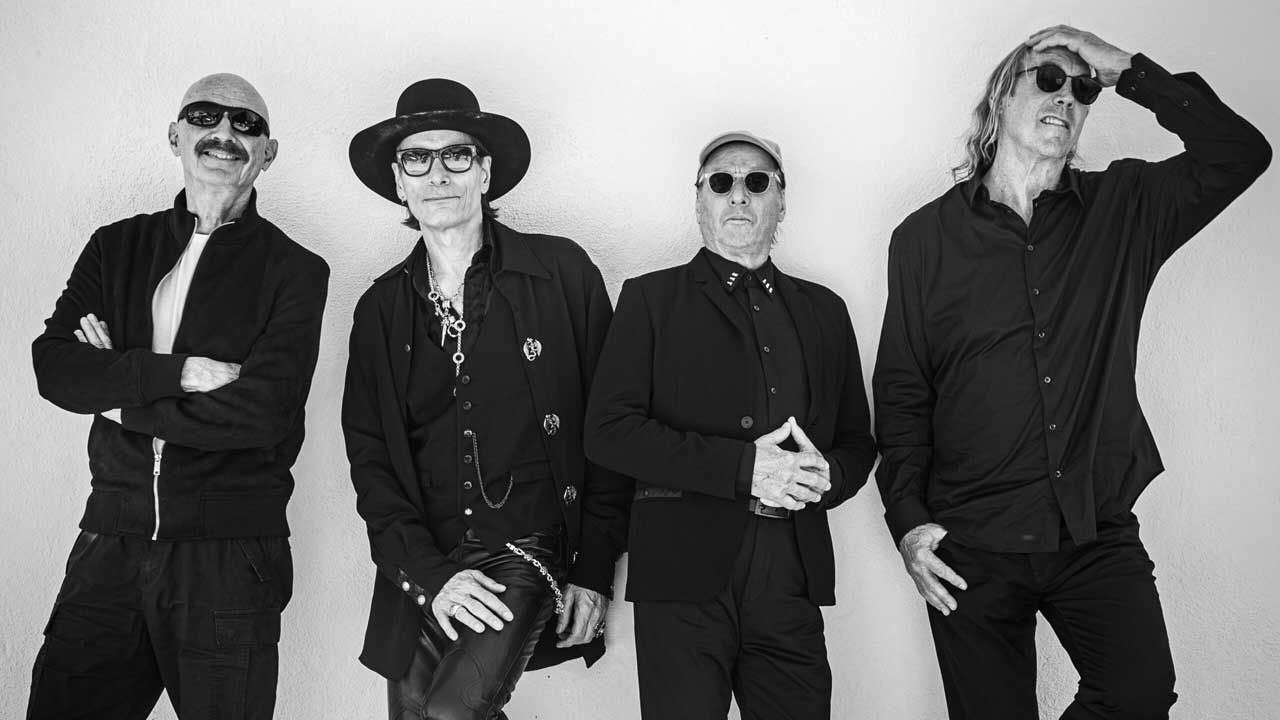You can trust Louder
Earlier this year, when we first broke the news that Rush’s 1974 debut was receiving a lavish reissue treatment for its 40th anniversary, we bore the brunt of a torrent of erroneous comments on our social media. ‘Not prog!’ said the naysayers. ‘Missing the point!’ we retorted. By way of rejoinder, let’s open this review with a suitably ambiguous question: when is a Rush album not strictly a Rush album?
When it comes in a package like this ‘Rediscovered’ vinyl reissue. This isn’t just a vinyl copy of the original album (although alas there are no extra tracks, just the original eight songs.) This is the original Moon Records, pre-Mercury Records release, cut from original 1974 analog stereo masters.
The whole thing comes housed in a sturdy custom box, with original Moon jacket art, the original MN-100-A/B Matrix etching, poster, lithographs of Geddy Lee, Alex Lifeson and drummer John Rutsey and a Rush family tree (although given the band’s recording line-up featured merely one change, with Neil Peart replacing Rutsey in July 1974, how many branches can that tree have?).
It’ll be interesting to see if such ephemera is enough to induce Rush fans to shell out for what is essentially ‘just’ the original album. After all, extra discs full of unreleased material and alternate versions are very much the norm for such re-releases these days. (Just take a look at Brain Salad Surgery box in this very issue.) But then, really early Rush material is pretty thin on the ground. Garden Road and Fancy Dancer spring to mind, but only the former has surfaced, on the non-official Rush ABC: Live From Cleveland’s Agora Ballroom.
And given that the band told Prog back in April 2013 that their debut single, a cover of Buddy Holly’s Not Fade Away backed with their own You Can’t Fight It was “really tinny and shitty”, that’s unlikely to see the light of day either. Still, for what it is, the eight tracks that do comprise Rush constitute some mighty fine music.
I can still recall the first time I heard the album, round a mate’s house, both of us tittering at Geddy Lee’s high-pitched voice as he screeched into opener Finding My Way (well, that’s what you did when you first heard Geddy), and we also marvelled at Alex Lifeson’s excellent, instantly appealing guitar work. I can also remember when I actually purchased this album for myself, in a shopping mall in Toronto (how apt!) while on holiday when I was 16 - on the Anthem label no less! And somehow, listening back to tracks like Here Again, Need Some Love and Before And After (the ones you never listened to much first time around) the original sense of awe comes flooding back.
Rush were unique, even on their debut. They were a little bit like Led Zeppelin and Cream. But they were also a little bit like Yes. We didn’t know that prog epics like By-Tor And The Snow Dog and The Fountain Of Lamneth were waiting in the wings. Of course the titanic album closer Working Man, still a live favourite, is the jewel in the crown here with its monolithic riffing, but it is ably backed up by the equally inventive What You’re Doing (the first Rush song I learned to play on guitar!), while In The Mood and Take A Friend hold down a rocking groove.
Sign up below to get the latest from Prog, plus exclusive special offers, direct to your inbox!
In much the same way as Dream Theater’s often overlooked debut When Dream And Day Unite mixed Rush with Metallica and helped reignite the prog genre for a new audience in 1989, so Rush opened up the hitherto unknown possibility of melding hard rock with progressive flourishes, kick-starting a whole new genre. True, you might not feel the same eight tracks warrant further expenditure (around £35), but – regardless of the naysayers – there is no denying the importance of this pivotal album.
Writer and broadcaster Jerry Ewing is the Editor of Prog Magazine which he founded for Future Publishing in 2009. He grew up in Sydney and began his writing career in London for Metal Forces magazine in 1989. He has since written for Metal Hammer, Maxim, Vox, Stuff and Bizarre magazines, among others. He created and edited Classic Rock Magazine for Dennis Publishing in 1998 and is the author of a variety of books on both music and sport, including Wonderous Stories; A Journey Through The Landscape Of Progressive Rock.


